Are These the Bones of Leviathan?
What kind of incredible beast was the biblical leviathan? Speculation as to the identity of this sea creature has gone on for millennia. Leviathan is mentioned in a handful of passages throughout the Bible, but is most well known for its description in the book of Job.
At weather-worn sites across the Middle East, and in Egypt in particular, erosion has been revealing a terrifying creature that may well fit the biblical description.
Some years ago, we published an article examining the identity of Job’s behemoth (you can read that article here). While both creatures are enigmatic, the leviathan surely takes the cake as most peculiar—or, shall we say, the most fantastic. Some say it is an allegorical myth. Some claim it simply represents a crocodile. Then there is Wadi Al-Hitan.
A Sea Monster ‘in the Wilderness’
Wadi Al-Hitan is a paleontological site in southwest Egypt, whose name means “Valley of the Whales.” The dry, desert site is strewn about with gigantic skeletons of ancient, “early” whales (during whose lifetime this area was underwater). Over thousands of years, erosion has gradually revealed these creatures.
One particular species, whose remains are common throughout this area (and is also notable from other Middle Eastern sites), stands out: Basilosaurus, a creature whose scientific name means “King Lizard.”
Could this be the creature described by the Bible?
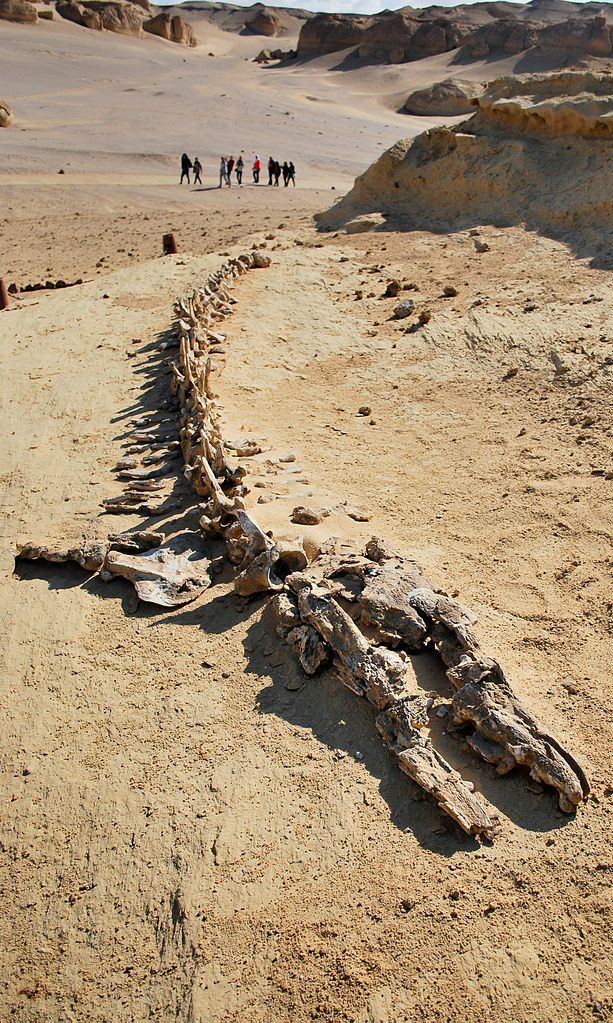
One peculiar scripture in the Psalms illustrates not only the beast but also a Wadi Al-Hitan-type setting. “Thou didst crush the heads of Leviathan, thou didst give him as food for the creatures of the wilderness” (Psalm 74:14; Revised Standard Version). Perhaps this psalm was written by an author who had seen such a startling sight as the image to the right: The “crushed,” once-fearsome skull of a sea creature now strewn out in the wilderness.
Surely these Basilosaurus skeletons would have been regarded with fear and awe by the ancient Egyptians, Israelites and other peoples of the Near East who witnessed them—and surely they would have been described by them in some manner (more on that further down).
Just what was Basilosaurus, and how does this creature fit with the biblical account of the leviathan?
(Typically at aiba, we use the Jewish Publication Society translation—for this article, we will use the King James Version, as the verse layout in Job is easier to follow).
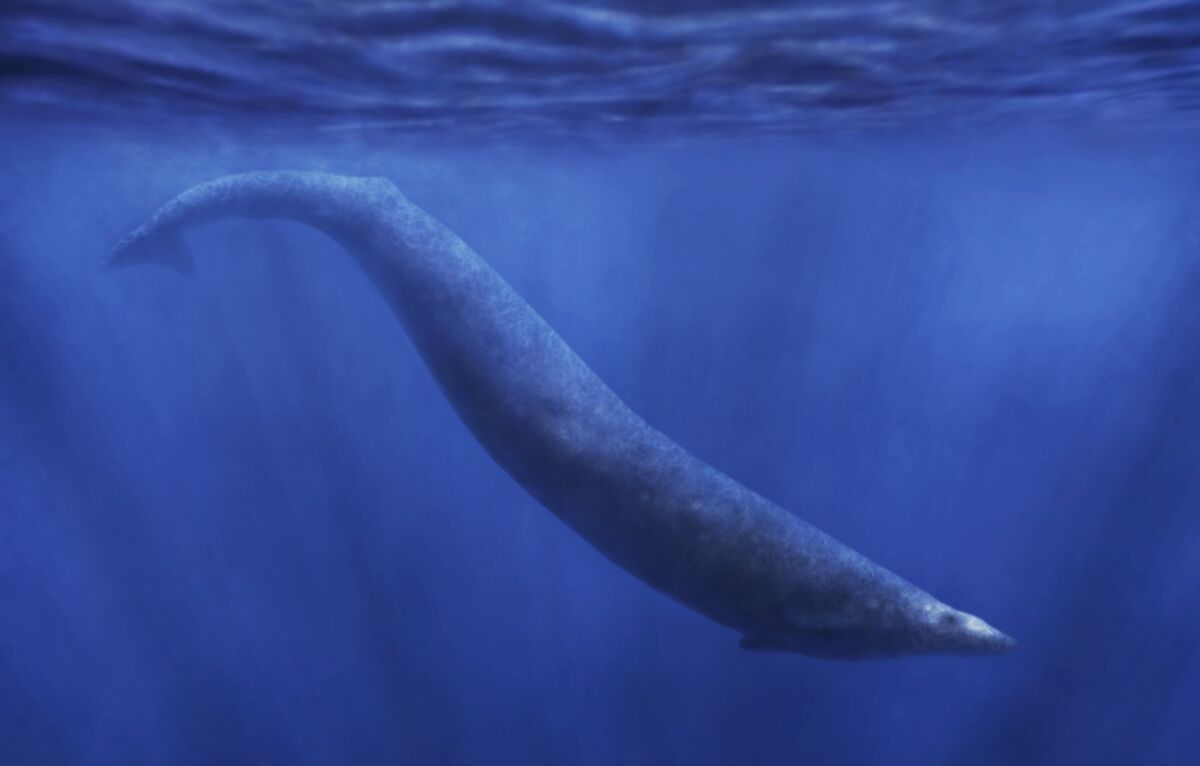
‘King Lizard’
A superficial reading of Job 41 probably brings to mind some kind of kraken or perhaps Moby Dick-style whale, a sea creature capable of terrifying sailors. Technically, Basilosaurus is a whale—part of the whale family. But this is no ordinary whale.
Basilosaurus, when it was first discovered, was originally thought to be a giant reptile—hence the name, “King Lizard” (“-saurus”). Unlike other whales, it is an incredibly long, snake-like creature, reaching lengths of 21 meters (70 feet) or more—thus, one of the largest creatures known to have existed in the “post-dinosaur” era. At the front end of that snaking spine was a skull 1.5 meters long, sporting large teeth and a bite force of 3,600 pounds per square inch.
The distinctly snake-like appearance of this “apex predator” fits with the biblical description of leviathan. Isaiah 27:1 describes leviathan as a serpentine creature (Hebrew “nahash”—the same word used for the snake in the Garden of Eden). The verse also describes it as a bending, or twisting, “serpent” and a “dragon in the sea.” This would match the discovered remains of Basilosaurus—appearing as a huge “king of the serpents” together with its dragon-like skull.
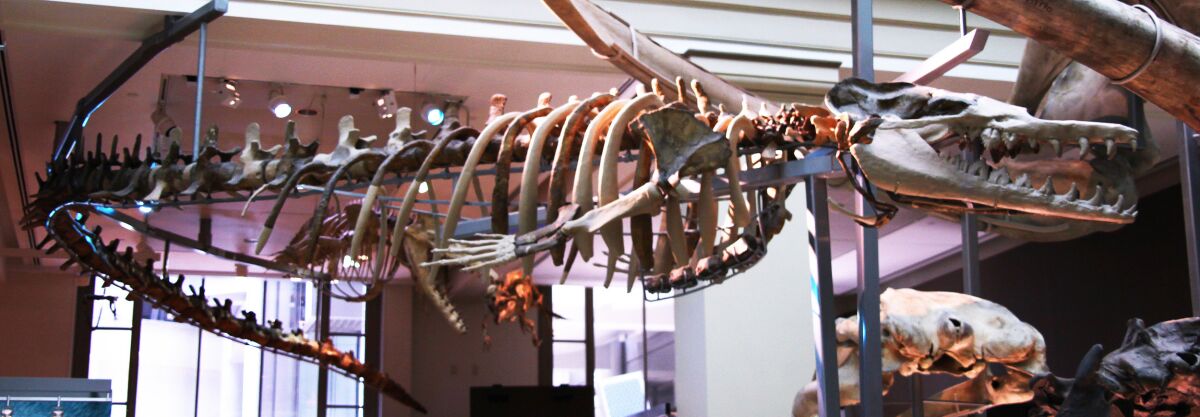
The original meaning of the Hebrew word leviathan denotes something “wreathed, twisted in folds” (Gesenius’ Hebrew-Chaldee Lexicon)—again, of a serpentine nature. Yet the biblical leviathan was not merely a serpent. Job 41:12 describes limbs and “comely proportion”—something that would match the limbed, yet extremely long and serpentine Basilosaurus. Verse 22 describes this creature having a powerful neck (snakes, squid and whales in general are not distinguished for their “necks”). Basilosaurus did have a sturdy neck.
Verse 14 mentions “terrible” teeth. Verse 20 describes nostrils, indicating an air-breathing creature: “Out of his nostrils goeth smoke, as out of a seething pot or caldron.” This paints a picture matching that of a whale blowhole (something that Basilosaurus likewise had), blowing water like steam out of a “seething pot.” Verses 31-32 describe leviathan in a deep sea environment (as does Psalm 104:25-26), befitting this creature.
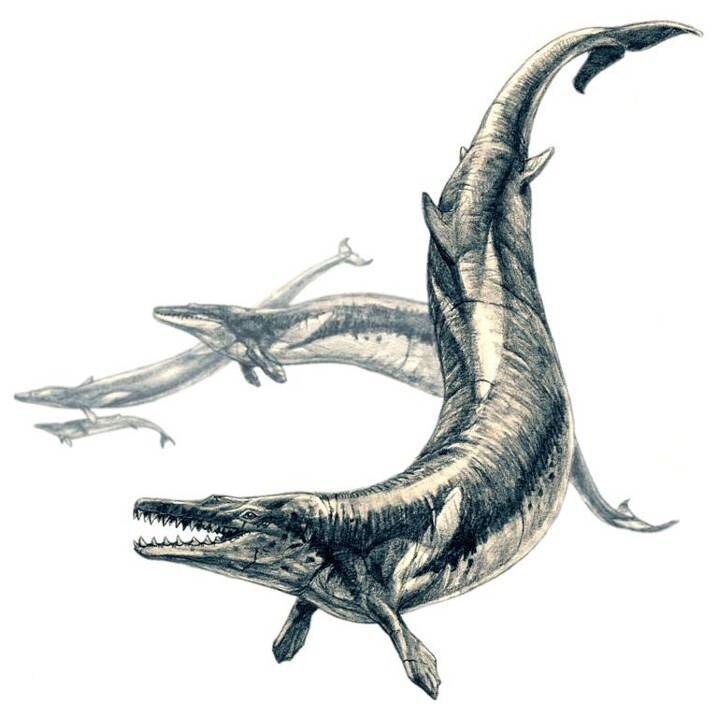
Isaiah 27:1 uses the term “piercing serpent.” There is some debate as to the translation, but if it is correct, it could match the pointed snout of Basilosaurus. And Job 41:31 describes a thrashing and churning of the sea, something more akin to having a whale fluke (tail)—as did Basilosaurus.
Coincidentally, even the scientific name of this creature fits the biblical description: The Septuagint (a third-second century b.c.e. translation of the Hebrew Scriptures into Greek) ends the description of leviathan by identifying him as “a ‘Basilios [king]’ of the children of pride” (verse 34).
And as for Wadi Al-Hitan? The Arabic name is directly related to the original word for leviathan. To this day, the modern Hebrew word for whale is the same, leviathan—and so the site can be translated quite literally as a Valley of Leviathans.
https://twitter.com/Dr_TheHistories/status/1573754566147182592
Difficulties
Was Basilosaurus the biblical leviathan? Certain verses of Job 41 remain unclear (and we don’t have a precise idea of what Basilosaurus looked like). Verses 19 and 21 read: “Out of his mouth go burning lamps, and sparks of fire leap out. … His breath kindleth coals, and a flame goeth out of his mouth.” These scriptures prove difficult.
Of course, there are known bioluminescent deep-sea fish that are rigged with various lights, “lamps.” But none known fit the other important “leviathan” parameters. On the other hand, these scriptures may be explained as a figure of speech (akin to the patriarch Laban being accused of “eating the silver”—an ancient term for theft—not, of course, literal). The exact same leviathan terminology used here is also used to describe God: “There went up a smoke out of his nostrils, and fire out of his mouth devoured: coals were kindled by it” (2 Samuel 22:9; see also Psalm 18). Clearly, this describes God’s power and might figuratively.
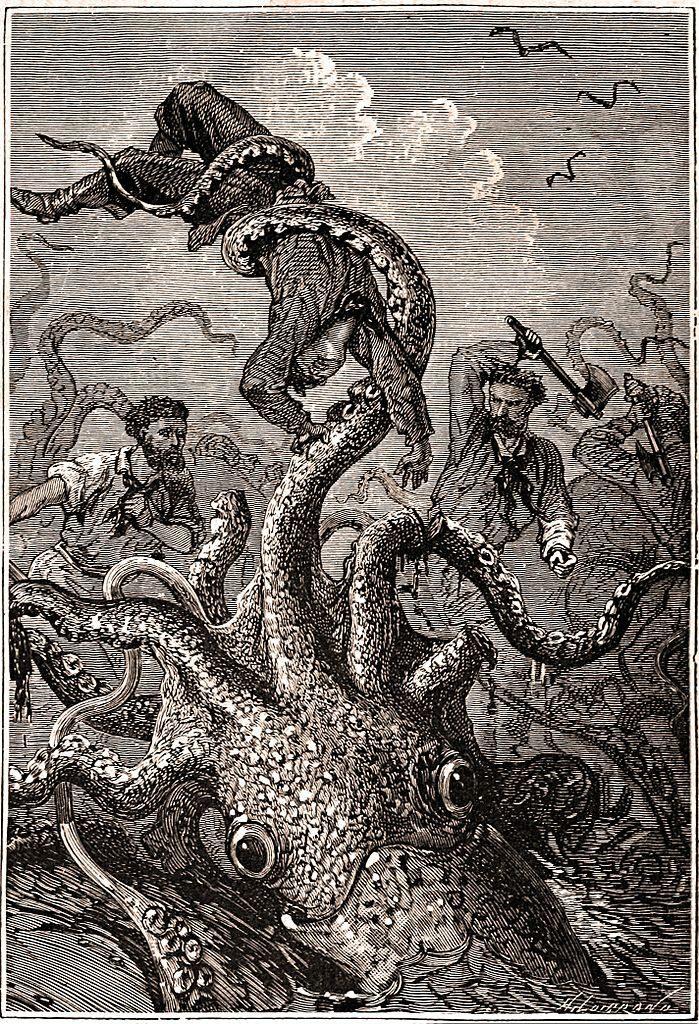
If leviathan were some kind of octopus or squid, significant mention would be expected regarding the many arms—and various other features, such as teeth, would not match any known creature. If it were a crocodile, the introduction of Job 41 would fall flat—as ancient depictions exist of hunting, trapping, spearing and killing crocodiles. Further, it is repeatedly referred to as a deep-sea animal. If leviathan were a simple serpent, mention would surely not be made of limbs or neck. Bible commentaries suggest alternative prehistoric creatures. A plesiosaur may be the closest alternate—but it would seem that significant emphasis would be made on a long neck, their primary feature, rather than the briefest mention of a strong neck. Further the pliosaurs were apex predators at the time of known plesiosaurs. A pliosaur would fit the bill for a fearsome toothed head and neck—but would not fit with a serpentine body.
Perhaps leviathan could fit as an umbrella term for the whale family (as the Hebrew word is used today), particularly carnivorous whales such as Basilosaurus and the sperm whale. But for the reasons described above—and especially the Middle East setting—it seems that the leviathan of the Bible is not just any “normal” whale.

Still Alive?
It would appear that God would describe a creature to Job that he would be familiar with—one that he, as a leader in a “wilderness” territory, would have either seen or heard described. Such would be the case with the scattered, ancient remains of Basilosaurus around the Middle East, including Jordan, Pakistan, Egypt and particularly at Egypt’s Wadi Al-Hitan—a location that Job may well have been familiar with, given the textual setting around the time of the patriarchal migrations to Egypt.
Likewise, some form of “leviathan myth” is known throughout the ancient Near East. Are they related to these gigantic remains? Ugaritic texts (from modern-day Syria and fitting roughly with the timeframe of Job) mention a serpentine monster called Lotan—a word directly connected to the Hebrew leviathan. Mesopotamian myths describe a parallel beast.
As for the dating for Basilosaurus? The modern scientific view is indeed that this creature came on the scene after the “Age of Dinosaurs”—around 42 million years ago—but that it died out some 34 million years ago. (Read “The Prehistoric World vs. Genesis” and “How Accurate Are Scientific Dating Techniques?” for more information about how this period actually fits in well with the biblical account.)
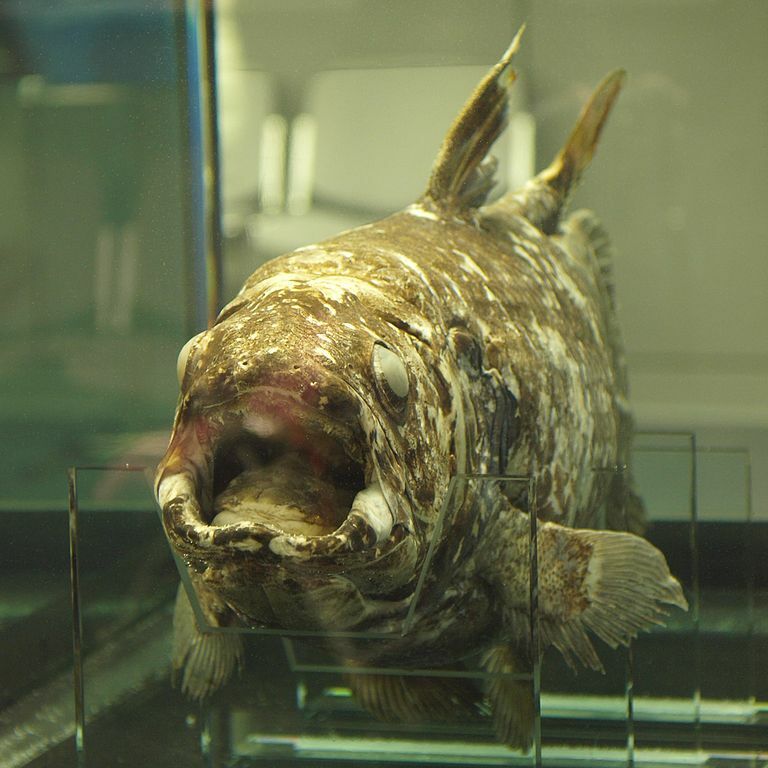
Yet consider the coelacanth, a large “simple fish” that supposedly evolved to its final form some 400 million years ago. Scientists believed it became extinct 66 million years ago—until someone caught one in 1938. (In a world of the supposedly continual “evolution” of weird and wonderful creatures—from dinosaurs to birds and dogs to whales—it would seem 400 million years is a rather long time for a creature to “just keep swimming.” Then again, I’m no evolutionary biologist.)
But like the coelacanth, who’s to say that a leviathan creature such as Basilosaurus is not still alive? Much remains unknown about what lurks in the ocean depths, and new creatures are being discovered yearly—including very large creatures. (In only three months since writing this article, two entirely new whale species have been discovered—see here and here.)

Various allegations of sea monsters have continued to the present day (the Loch Ness monster is probably the most famous). Over the centuries, various artistic depictions have attempted to represent alleged descriptions of beasts witnessed by sailors. Several depictions actually match Basilosaurus quite well. To the right is a depiction of the “Hans Egede sea serpent,” named after a missionary who reported the creature his ship encountered in 1734. It looks suspiciously familiar.
Cartographers of centuries past would typically overlay images of purported sea beasts onto their maps. The 16th-century Carta Marina is a famous example, decorated with beasts that likewise resemble Basilosaurus fairly well. Below is a plate from the map.

And in April this year, a Nigerian news website mundanely posted an article, with pictures, of what it matter-of-factly claimed was “another” Basilosaurus carcass that washed ashore, feeding the local population. Just a regular whale carcass? Maybe ….
I would be remiss not to include here the following short clip from the Smithsonian channel: a spine-tingling story hinting at the existence of a massive, unknown carnivorous sea creature. Could what happened in the video below be the actions of a leviathan?
https://youtu.be/VB8r0OjsQUk
Something pulled this great white shark down to the bottom of the sea, and there consumed it—a location that the Bible describes leviathan as inhabiting (Amos 9:3; Job 41:30).
The Point of Leviathan
But why the biblical account of leviathan? Why is a full chapter of Job dedicated to this creature? Why is it described in several additional biblical passages?
The context of the book of Job is clear: God was teaching Job a lesson in humility. A mortal man is no match for the mighty leviathan, monster of monsters. He neither created it nor can stand before it. Yet the beast is as nothing before the mighty God who created it. God has the capability to handle this beast. And Psalms and Isaiah describe just that—God’s destruction of the beast, in a metaphor of crushing the head of the great sea serpent—matching the prophecy made to the serpent in the Garden of Eden, a symbol of Satan: “he will crush your head, and you will strike his heel” (Genesis 3:15; New International Version). God holds power over the physical sea serpent, just as He does over the spiritual serpent.
The lesson of behemoth and leviathan, then, is a humbling of self-righteousness and self-importance. If man is as nothing before these mere physical beasts, how much less so before God? God recorded the leviathan in Scripture for a reason. He wants us to realize just how insignificant we are apart from Him—and the power that we have, with Him.
No mortal man would stand a chance against a 20-meter Basilosaurus. Yet God is capable of plucking it from the water and leaving its bones scattered across the desert.